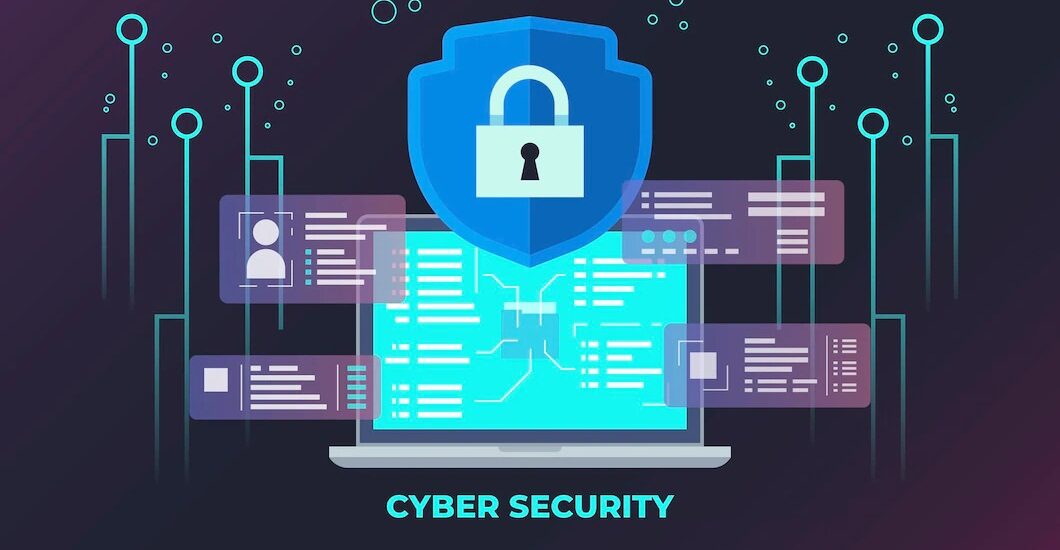Cybersecurity threats are increasingly sophisticated and determined and keeping yourself and your business safe requires knowing the various types of attacks that may occur. The strategies you implement in response to each threat type will vary, so it’s important to understand them all before you develop your security plan. There are five main types of cybersecurity threats that you need to be aware of. Here’s how they work and how you can protect yourself from them.
- What is cyberspace?
- What are the types of cybercrime?
- Ransomware
- Malware
- Data breaches
- DDoS Attacks
- Password Cracking
- Phishing Emails
- Software exploitation
- Viruses, Worms, and Trojans
- What do we do about cybercrime?
- How to protect your company from cyber-attack
1.What is cyberspace?
Cyberspace is the interconnected network of computers, devices, and people used to store, share, and access information. It’s made up of physical infrastructures like servers and routers and virtual infrastructures like cloud-based applications and social media platforms. And it’s constantly evolving as new technologies are developed and adopted. So how do you protect yourself from cybersecurity threats and maintain privacy in cyberspace? First, look at three of the most prevalent types of cybersecurity threats to understand what they are, what they mean for your business, and how to prevent them.
Using social media Has Its Risks! Social media sites are used by millions of people every day. If managed properly, social media is a handy tool for businesses.
2.What are the types of cybercrime?
There are many types of cybercrime, but some of the most common include viruses and malware, phishing scams, cyber stalking, and identity theft. Viruses and malware can damage your computer or steal your personal information, while phishing scams trick you into giving up sensitive information. Cyberstalking is when someone harasses or threatens you online, and identity theft occurs when someone steals your personal information to commit fraud.
Identity theft occurs when someone steals your personal information to commit fraud. This can include filing fake tax returns, credit card applications, or insurance claims. Fraudulent phishing emails usually come from an email address that looks legitimate but is an imposter sending out scam messages with malware attachments. Cyberstalking is when someone harasses or threatens you online, and these threats can be persistent and continuous if left unchecked.
Cybercriminals can use malware on your computer or device to get personal information or steal money from you.
-
Ransomware
Ransomware attacks are on the rise, and they’re becoming more and more sophisticated. Here’s what you need to know about this growing threat.
What is ransomware?
Ransomware is malware that encrypts your files and demands a ransom to decrypt them. These attacks are usually carried out by email, where you receive an attachment that looks innocuous but is malicious. When you open the attachment, the ransomware encrypts your files and displays a message demanding a payment to decrypt them.
These payments are usually made in Bitcoin, as it’s difficult to trace. Once you’ve paid the ransom, there’s no guarantee that you’ll get your files back.
If you’re unfamiliar with ransomware, it’s a type of malware that encrypts your files and demands a ransom to decrypt them. These attacks can be devastating, and they’re becoming more and more common. However, there are a few things you can do to protect yourself from ransomware attacks:
- Make sure that you have a sound backup system in place. That way, if your files get encrypted, you’ll be able to restore them from your backup.
- Keep your security software up to date. There will help to ensure that you’re protected from the latest threats.
- Be careful about the links and attachments.
-
Malware
A malware attack is when a cybercriminal uses malicious software to infect your computer or device and gain access to sensitive data. There are many types of malwares, including viruses, worms, Trojans, spyware, and adware. Some malware is designed to damage your system or steal your information, while others are used to track your online activity or display unwanted ads. Cybercriminals can deliver malware through email attachments, downloads, infected websites, and even via text message.
There are different ways you can protect yourself from malware attacks. Using up-to-date security software, avoiding risky websites and emails, and being vigilant about entering your personal information online will help keep you safe from cybercriminals who may be lurking behind some of those links. Antivirus software is still one of your best defenses against malware infection. Ensure you have a good antivirus installed on all your devices, including computers, phones, tablets, and routers. Set your browser to block harmful web pages before you reach them automatically. Keep your operating systems and applications updated with the latest security patches as soon as they’re available. Downloading apps from trusted sources also helps reduce the risk of downloading malware onto your devices.
-
Data breaches
A data breach is when an unauthorized person accesses and retrieves sensitive information. This can happen through hacking, phishing, or social engineering. A data breach can have serious consequences, like identity theft, financial loss, and damage to your reputation. That’s why it’s essential to know the different types of cybersecurity services San Diego and how to protect yourself from them. Hackers are the most common type of threat, but you should also know about phishing emails and malware.
Hackers use their skills to find a vulnerability in your system and exploit it for personal gain. For example, hackers will often install malware on a computer that records keystrokes and transmits them back to hackers, enabling them to steal passwords, credit card numbers, or other valuable information.
-
DDoS Attacks
A distributed denial-of-service (DDoS) attack is a type of cyberattack in which an attacker attempts to make a network or system unavailable by flooding it with traffic from multiple computers. DDoS attacks are often used to disable websites or online services.
More recent versions of DDoS attacks don’t just come from many systems – they can also come from a single system with millions of infected computers worldwide. These so-called botnets are a way for hackers to pool their resources and amplify their attack power by generating far more traffic than any one system could handle.
-
Password Cracking
One of the most common methods cyber criminals use to gain access to systems is password cracking. This is usually done using a brute force attack, where the attacker tries every possible combination of characters until they find the right one. They can also use dictionary attacks, where they try common words and phrases, or social engineering, where they trick people into giving them their passwords.
Passwords are often accessible for cyber criminals to access because many people re-use passwords across multiple sites or use weak passwords that are simple to guess. It’s a good idea to change your password regularly and never re-use it on different systems, which is why you should always create strong passwords with a mix of upper- and lower-case letters, numbers, and symbols. Hackers can also gain access by gaining physical access to your system.
-
Phishing Emails
One of the most common types of cybersecurity threats is phishing scams. Phishing is when someone tries to trick you into giving them your personal information, like your password or credit card number. They might do this by sending you an email that looks like it’s from a trusted source or by creating a fake website that looks like a real one. Be careful not to click on any links or enter your information into any forms unless you’re sure they’re legitimate.
Cybercriminals use phishing scams because they’re inexpensive and easy. They can launch an entire phishing campaign from a laptop in their own home, meaning that even if they get caught, later on, it’s hard for authorities to see them because there aren’t physical locations to raid. Phishing campaigns are also fast and flexible, which makes it harder for security experts at large companies like banks or payment processors to stay ahead of them.
Another type of cyber security threat is a ransomware attack. A criminal hacker compromises your computer or company’s computer system and blackmails you into paying them to get it back online. They typically threaten to publicly release sensitive or embarrassing information if you don’t pay them by a specific date.
-
Software Exploitation
One type of cybersecurity threat is software exploitation. This is when malicious actors take advantage of vulnerabilities in software to gain access to systems or data. They can do this by developing malware or code that can exploit these vulnerabilities. Software exploitation can be used to conduct cyber-attacks, steal data, or even take control of systems. Another example of a software exploitation attack is the now infamous WannaCry ransomware attack. In April 2017, over 200,000 computers across 150 countries were affected by this ransomware attack which encrypted user files and demanded ransom payments to restore them. Another form of software exploitation is botnets, which use compromised computers as a platform for spreading malware or conducting other types of attacks.
Another example of a software exploitation attack is crypto-jacking. This involves malicious actors using a user’s computer system to mine cryptocurrency without their knowledge or consent. For these malicious actors to mine cryptocurrency using a victim’s system, they must first gain access. This can be done by exploiting vulnerabilities in web browsers, attacking an endpoint device such as your laptop or smartphone, compromising cloud-based systems, and then taking control of cloud computing resources.
-
Viruses, Worms, and Trojans
One of the most common cybersecurity threats is viruses, malicious code that can damage or destroy data. Worms are similar to viruses but can spread without user interaction. Trojans are also malware, but they disguise themselves as legitimate programs to trick users into installing them. These threats can wreak havoc on your computer and data, so it’s essential to be aware of them and take steps to protect yourself. Some ways you can do this include downloading an antivirus program and checking for updates regularly.
It’s also important to remember that malware isn’t always designed for nefarious purposes. Instead, corporations and governments use some of it to spy on their targets. Protecting yourself from these threats can be challenging, but you should remain vigilant to know if your devices have been compromised.
3.What do we do about cybercrime?
The best way to protect yourself from cybercrime is to be aware of the different types of threats out there. Here are some of the most common cybersecurity threats and how they affect you and your personal information.
Malware can infect your computer with a virus that will steal your personal information, such as passwords and banking data, by recording what you type on your keyboard or sending this information back to hackers for profit.
Phishing scams are designed to lure you into sharing personal information, such as credit card numbers or account login credentials, by pretending to be an email from a trusted entity like your bank or a social media site like Facebook.
Scams like phishing and malware are relatively easy to avoid by being careful about what you click on and where you enter your personal information. However, another type of cybercrime is more challenging because it involves people.
4.How to protect your company from cyber-attack
As a business owner, you need to be aware of the different types of cyber security services in Poway so that you can take steps to protect your company. Here are the four most common cyber-attacks and how they affect businesses.
Malware: Bots and malware impact all aspects of an organization’s computer systems, including websites and databases.
Phishing/spoofing emails: Phishing and spoofing emails try to trick recipients into believing they’re legitimate, often using fake email addresses. They’re designed to look like they come from trusted organizations to elicit personal information, financial data, or account details.
Worms/Trojans: Worms and Trojans get onto a system when they’re downloaded as attachments or links. Unlike viruses, these programs don’t replicate themselves, leading to computer damage and security breaches. These are often described as drive-by downloads because you may not realize you have them until after your data has been compromised.
Viruses/Ransomware: Viruses and ransom ware are designed to affect large numbers of computers across an organization’s network. They can spread quickly, especially in organizations that rely on email or other electronic communication. The good news is that most security software can catch viruses and block ransom ware before they do any damage.





